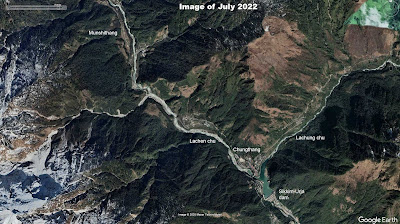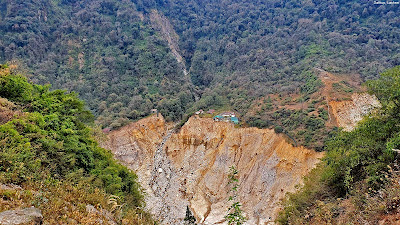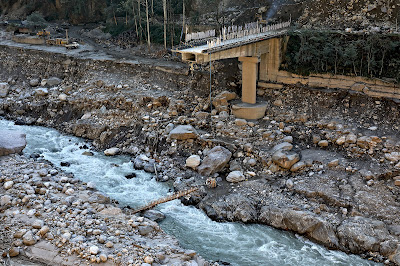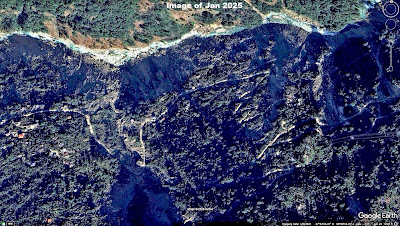By no stretch of imagination am I an expert on landslides but having visited numerous landslides over the years and having observed the changes taking place, I believe that under the right circumstances and with time, nature has a remarkable way of healing landslides.
Here are case studies and photos of 3 landslides in and around Kalimpong:
14th mile landslide in Kalimpong
This is a really old landslide and 'a sinking zone' which existed more than 50 years ago. STH has covered this extensively in this blog in 2007 and in 2010

 | ||
| Drone image of 14th Mile landslide on 21Feb2025. The whole landslide area is now covered with treesDrone image of 14th Mile landslide on 21Feb2025. The whole landslide area is now covered with trees |
Massive Landslide at Bhalukhop (Kalimpong district) on 30Jul2021.
A 232mm rainfall over a 13hr period on 29/30July2021 triggered a massive landslide in my village, Bhalukhop in Kalimpong; the incident has been covered in a STH blogpost here. I have placed a Google Earth image of the landslide path below:
Dhajey, Bara Bhalukhop
As a native of this village, I'm deeply familiar with the landslide issues in our area. To address this problem, the local community employed a traditional mitigation method at Dhajey, which involved a three-step approach:
1. Water diversion: A concrete river training structure was built to channel water away from the landslide-prone area (see top photo).
2. Soil stabilization: Bamboo palisades were constructed to prevent soil erosion during rainfall, allowing pioneer species like mosses and lichens to take root. Under favorable conditions, grasses and small shrubs would emerge within a year, anchoring the soil and reducing erosion. Alternatively, jute matting or fiber could have been used to support the new vegetation (lower photo).
3. Long-term stabilization: Over several years, larger plants like bushes and shrubs would grow, holding the soil together and enabling deeper-rooted species like trees to develop, further binding the soil through nature's "soil nailing" process.

SaveTheHills
savethehills@gmail.com
9475033744






































